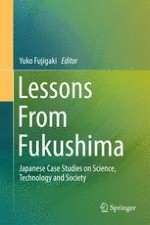2015 | OriginalPaper | Buchkapitel
2. The Processes Through Which Nuclear Power Plants Are Embedded in Political, Economic, and Social Contexts in Japan
verfasst von : Yuko Fujigaki
Erschienen in: Lessons From Fukushima
Aktivieren Sie unsere intelligente Suche, um passende Fachinhalte oder Patente zu finden.
Wählen Sie Textabschnitte aus um mit Künstlicher Intelligenz passenden Patente zu finden. powered by
Markieren Sie Textabschnitte, um KI-gestützt weitere passende Inhalte zu finden. powered by
